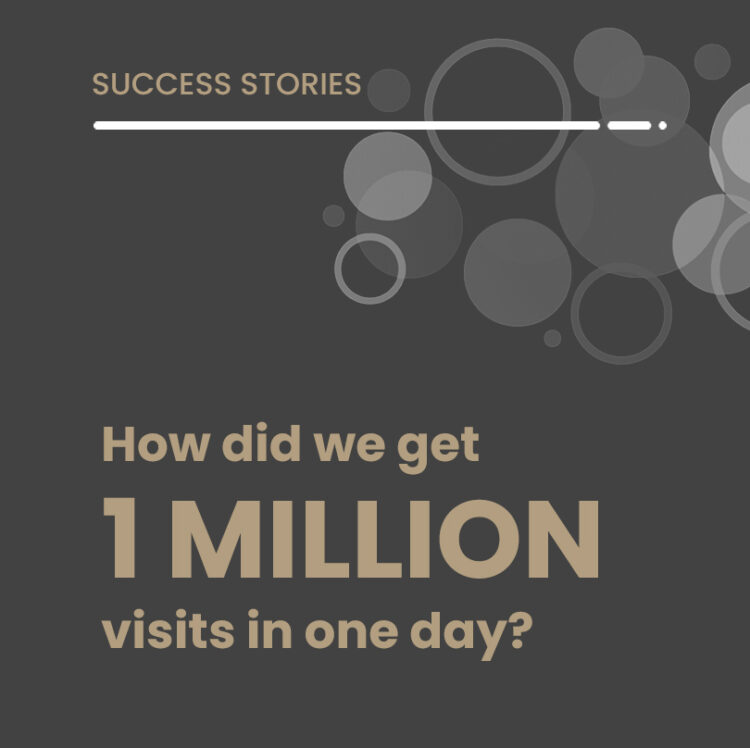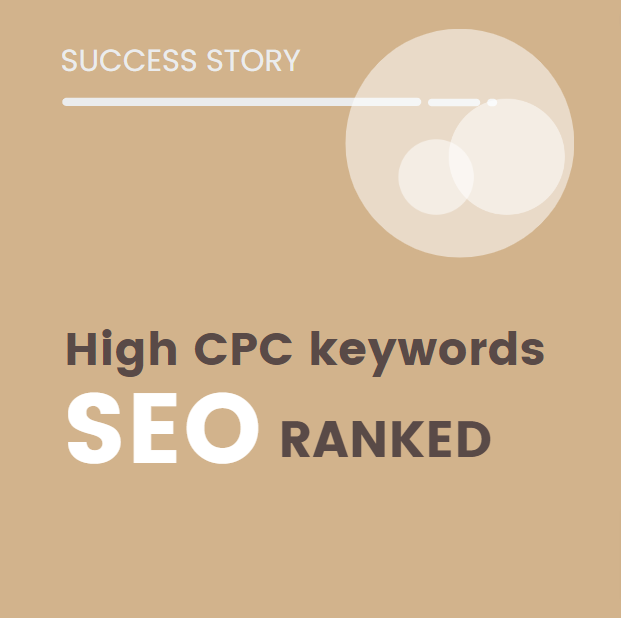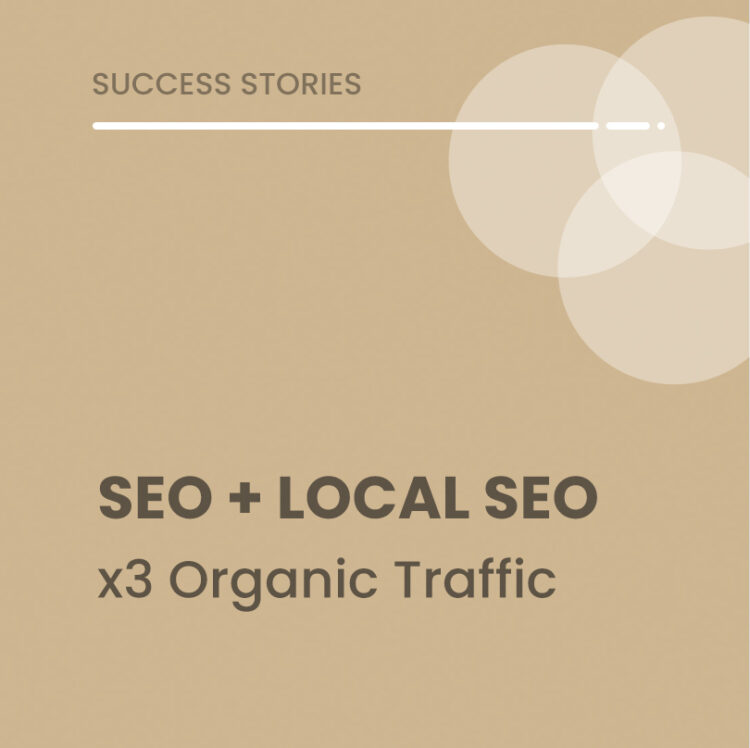SEO, properly used, can be a magnificent lever to achieve short-term results when you know what you are doing and apply it correctly.
As an example we bring you the following case of one of our clients:
Where the massive application of the FAQ Schema data markup has had an outstanding performance.
And it turns out that the Team Lead, Jose Vicente Perez (also known as Josevi), the SEO Manager at iSocialWeb, has brilliantly utilized the FAQ Schema on 1,120 informational pages of the blog. This strategic move has resulted in a remarkable surge in organic traffic and click-through rates (CTR) for the project.
This is the success story that will be the focus on: the massive implementation of the FAQ tagging scheme.
Where we will show you the remarkable results obtained in just 7 days.
Specifically, during this period we obtained the following results:
- Exponential clicks increase: Following the roll-out we witnessed a significant increase in clicks. This type of marking went from generating a total of 38 clicks per month, to almost 3,500. An increase of 9,210%.
- Significant increase in CTR: The average CTR for these pages saw a significant increase from 0.1% to 1.3%. A notable increase that reflects the increased visibility and attractiveness of the search results.
- Improved search engine rankings: The implementation of FAQ schema markup, although not a ranking factor, contributed to improved page rankings in Google. The average position went from 24.5 to 19.9, indicating a positive impact on visibility in SERPs.
All in all, the implementation of the FAQ schema markup led to a substantial increase in organic traffic.
On average, all the web pages where it was implemented experienced a daily increase of 200 organic clicks:

And out of the 1,120 URLs where it was implemented in less than 11 days, the FAQs were displayed on Google for 462 pages, which represents 41% of the total, as shown below:

The remarkable surge in traffic demonstrates the great effectiveness of implementing the FAQ schema to attract relevant users to the website.
And the best part?
All of this was accomplished within a few short days, a truly impressive achievement.
Get ready to dive into the nitty-gritty details of the challenges we faced to achieve these outstanding results.
So, don’t miss a beat and keep reading!
Starting point: Why implement FAQ Schema Markup in 2023?
Knowing that Google has repeatedly declared that Schema markup on a page is not a ranking factor, you must be wondering:
Why invest in optimizing enriched data for informational content when transactional content seems more important?
It may sound crazy at first, but here’s the simple answer.
The iSocialWeb SEO team, led by Josevi, had been working on this project for a year and a half.
After completing the high-impact SEO optimization tasks, only a few “minor” tasks remained. However, we wanted these tasks to meet two criteria:
- have a medium/high impact on organic traffic.
- and be quickly implemented.
We all know that one of the keys to successful SEO is to implement as many improvements as possible in the shortest time frame. So, following these principles and after careful cost-benefit analysis with the client, we concluded that implementing structured data markup for frequently asked questions was the perfect next step.
The only hurdle?
The client’s CMS was custom-built, requiring manual action on hundreds of URLs to implement this enhancement.
The Challenge: Implementing structured data for FAQs at scale to maximize the impact of this action and drive optimal results
In this way:
If we adhered to the cost/benefit condition set by the management, this option seemed to be worth dismissing due to the following reasons:
High intensity in terms of hours/consultant.
The benefits of executing this task were 100% indirect.
However, during discussions with the client’s development team, we realized how simple it was to deploy specific programming using JSON-LD to create data markup for the selected pages. This solution effectively resolved the problem of manual implementation, reducing the time required from weeks to hours.
This was a crucial consideration within the framework of our SEO task prioritization.
Another challenge was demonstrating the monetary value of investing in this indirect action.
Considering the typically high Customer Lifetime Value (CLV) for SaaS, we swiftly recognized the significant profit potential if this action was executed rapidly and at scale. We were looking at a six-figure increase in conversions for a mere 0.3-point improvement.
Therefore, after discussing the situation with the client’s development team and realizing the ease of implementing this action, we proposed implementing it simultaneously across 1,120 blog URLs.
Specially, no changes were made to the content, ensuring no time was wasted.
Undoubtedly, the core team’s deep understanding of the client’s business, particularly Josevi’s exceptional analytical skills when examining customer data, allowed us to leverage this opportunity to our advantage.
Now, let’s delve into how we accomplished this:
The Solution: Defining the pages to implement FAQs and establishing development rules.
The biggest challenge we faced was ensuring the correct implementation of FAQ schema markup without any errors, considering it was going to be deployed on a massive scale and in a single action.
You can imagine the chaos that could have ensued if faulty code was replicated across hundreds of pages simultaneously.
It would have been a total disaster.
However, to ensure the success of implementing the FAQ schema, we followed a highly rigorous process:
- We carefully defined and studied the pages suitable for rich results in Google using Schema markup.
- We analyzed which content should be included in the questions and answers.
- We validated the implementation of the Schema markup code according to strict SEO standards.
Next, we provided detailed explanations of the different actions to the developers to avoid any potential errors or misunderstandings.
Now, let’s dive into the specific steps we took to tackle this challenge:
1- Identifying the pages where FAQ Schema could be applied
Schema markup can be applied to multiple pages on a website, depending on the nature of the content. It is essential to strategically select the pages where Schema markup will have the most significant impact.
When it comes to FAQ Schema specifically, it is advisable to implement it on pages dedicated to frequently asked questions or informative articles, where users seek clarifications on specific topics.
By incorporating FAQ Schema into these pages, we provide search engines with structured data that enhances their understanding of the content and enables them to display relevant information in search results more effectively.
Like the example below:

For example, if you manage an e-commerce website that sells electronic equipment and has a dedicated page for frequently asked questions about shipping policies and product warranty information, implementing FAQ Schema on this page can make the result more eye-catching.
But you can also use this in blog articles or on the service pages of your website.
The reason is that occupying more space in Google’s SERP (Search Engine Results Page) usually helps increase the number of clicks, visits, and conversions.
In summary:
Applying Schema markup like FAQ Schema can greatly benefit various types of web pages, such as:
- Product categories, articles, etc.
- Blog posts with a frequently asked questions section included in the body of the text.
- Informational or purchasing and service condition pages.
It helps increase visibility in SERPs and attracts more clicks from interested users searching for relevant information.
In conclusion:
Applying this markup to our client’s blog content allows us to gain a significant amount of space in the SERP real estate.
2- Deciding what to include in your page's FAQ content
When creating the frequently asked questions (FAQ) content for these pages, we took into account the needs and questions of the target audience while leveraging the existing texts created by our client’s content team.
This helped update the content of the articles and better address the users’ search intent.
As a result, we achieved a dual effect:
- Improved positions in the search engine results pages (SERPs)
- Increased click-through rates (CTR)
This explains the considerable increase in organic traffic experienced for content pieces that previously showed a nearly flat line of clicks and impressions.
3- SEO validation of the implementation of Schema Markup code
Once the pages on which the development was going to be deployed to activate the bulk data markup were decided and selected, we moved on to the code validation phase to ensure that there were no issues.
This step was the most important. We couldn’t afford to make any mistakes.
To do this, we initiated a three-phase code validation process:
1st step: Code testing:
We used the Google Structured Data Testing Tool to verify the correct implementation of the core code on their website.
Inputting the code snippet or providing the URL of the test page allowed us to obtain a free evaluation and determine if the implementation was correct.
The tool provided valuable information to make any necessary adjustments, ensuring a thorough validation process.
2nd Preview pages with the Google Rich Results Tester:
We implemented the code on a test page and ran it through the Google Rich Results Tester.
Although not necessary, we wanted to make sure that the code snippet was correct.
This testing tool informed us about the page’s eligibility for rich results and showed how the data would appear on the search engine results pages (SERPs).
3rd Re-crawl the page:
Once the code was deployed on the 1,120 pages, we decided to re-crawl and index these pages.
This allowed Google to quickly take note of the changes in its search results.
The validation of the Schema markup code implementation ensured that search engines understood and accurately displayed the content of the frequently asked questions in rich snippets.
It also ensured that the rich data was being displayed in the SERPs, accelerating the deployment process.
The results: Spectacular increase in informational content performance
It is clear that choosing to implement data markup is preferable to not doing so. The best proof of all this is right below:

Compared to the previous period, the “MoM” results speak for themselves:
1- We managed to increase domain visits by 3,460 in 11 days and up to 6,000 in the following weeks.
2- The number of impressions skyrocketed to over 235,000.
3- The CTR went from “0” to 1.5%.
And that’s just the average, as individual results for many URLs were much higher.
All of this happened in less than 11 days until the deployment in the SERPs by Google was completed.
This leaves us with some important insights, such as:
- Implementing FAQ Schema can significantly increase organic traffic and click-through rates, with the potential to gain an additional 200 clicks per day in just 28 days.
- FAQ Schema enhances visibility in searches by allowing your web pages to appear as rich results or in the “position zero” in Google Search.
- It increases click-through rates by providing additional information through rich snippets, making your site more appealing to users.
In conclusion: Proper Schema markup continues to deliver high SEO performance
Despite being in 2023, the proper implementation of FAQ Schema, itemlist or How-To markup can have a significant impact on the visibility of a website, click-through rates, and its results.
But it doesn’t stop there.
The strategic use of FAQ Schema on informational pages allows for the improvement of their profitability, increasing their contribution to any company’s conversion funnel.
In this case, a 200 daily click increase translates to an additional 6,000 monthly visits. If the conversion rate is 0.15% and the average customer lifetime value is €1,800, we’re talking about an additional economic value of €194,400 per year.
For subscription-based business models, these “small incremental improvements” can make the difference between surpassing the break-even point or not, and can additionally provide substantial profitability increases due to marginal acquisition costs being nearly zero.
In any case, this is a significant figure. This is the potential that optimizing informational content through SEO has for a business.
Therefore:
If you’re looking for an effective way to achieve quick SEO wins and have a SaaS business model, incorporating FAQ Schema should definitely be one of your priorities.
In summary:
Take advantage of our experience in implementing structured data markup to attract more organic traffic to your website while improving your performance.
We’ll be happy to address any doubts you may have.
Co-CEO and Head of SEO at iSocialWeb, an agency specializing in SEO, SEM and CRO that manages more than +350M organic visits per year and with a 100% decentralized infrastructure.
In addition to the company Virality Media, a company with its own projects with more than 150 million active monthly visits spread across different sectors and industries.
Systems Engineer by training and SEO by vocation. Tireless learner, fan of AI and dreamer of prompts.
- Este autor no ha escrito más artículos.






